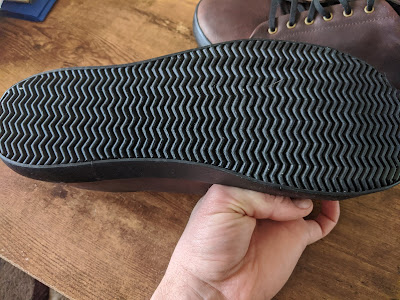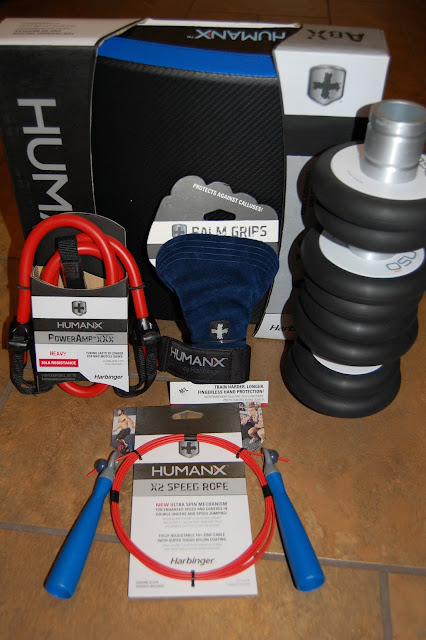Birchbury Bramfords Shoe Review
Since minimalist shoes became a thing in the running world and
other athletic niche communities, hundreds of different varieties of shoe
models have been produced by dozens of shoe manufacturers in order to meet the
widely-varied needs of active folks with a taste for light-weight footwear that
doesn’t interfere with their natural movement patterns. *deep breath* Having
run either barefoot or in minimalist shoes myself since 2006, I’ve kept a
fairly close watch on the minimalist shoe “industry,” and there’s something I noticed
years ago: There have always been many more options for running and other
sports than there has been for formal situations or the workplace. This gap in
offerings leaves folks to either pay outrageous prices for boutique brands, modify
their fancy (and probably pricey) footwear, or wear clunky, heavily-heeled, inflexible
“traditional” shoes.
That is no longer the case.
Enter: the Birchbury Bramford shoes. Birchbury is a newcomer
to the shoe market, and they are currently running a Kickstarter-style, early
ordering window to earn discounts on a pair of Bramfords, their first shoe
offering. You can pre-order here. Their website touts their minimalist bona
fides, like a wide toe box, zero arch-support and motion control nonsense, no
stacked heel, and simple construction. Features-wise on paper, they definitely
check all the boxes I personally desire from a shoe of this type. Disclosure:
Birchbury contacted me and provided me with a pair of Bramfords in order to
review here.
First Impressions
I let out an audible “wow!” when I pulled these shoes out of
the box. They just looks great. I’m no leather connoisseur, but the Bramfords upper
definitely feels and appears very high quality. In fact, all of the materials
just feel solid, and the construction appears strong without being overly
bulky. I was impressed. The sole of the shoe is flat as a pancake with a grippy-feeling,
classic, zig-zag waffle tread. I like the use of a black rubber outsole because,
since the outsole tends to get the most abrasion on most shoes, the Bramfords will
likely show less wear over time.
One big surprise was the lacing system that is built into
the shoes. The Bramfords sport a flexible lacing system – similar to the Xpand®
system that I use on almost all my running shoes. I absolutely HATE tying
laces, so I was super excited to try this feature out. I did notice that the
system was “fixed”: there is no option for adjustment, which could be a problem
for folks with oddly shaped feet.
The overall appearance of the shoe screams “business casual”
to me. My typical work attire is khakis or slacks with a polo shirt, so I
anticipated getting lots of use out of these shoes if they worked as
advertised.
Fit and Feel
The first time slipping the Bramfords onto my feet was
amazing. The interior feels seamless, and there is nothing to hang up on, which
makes taking the shoe on and off a breeze. Like I mentioned above, I absolutely
despise laces. I resent having to tie shoes every time I put them on for a few
reasons: it adds time to my daily routine, it’s inconvenient if you have to
rapidly slip shoes on for something, and it’s very aggravating when I can feel
that I’ve tightened the laces unevenly – which necessitates that I untie and
retie them to “balance” them like some kind weirdo. This is the reason I have
replaced the laces in almost all of my running shoes with speed laces.
Probably the most delightful part of the Bramfords is the foot
bed, which features a foam, leather-topped insole. It’s cushioned, but not so
much as to feel squishy or memory-foamish. The lack of contour or arch support
is also as-advertised, and that’s great because that is something that is an absolute
deal breaker for me. The overall effect is right in the sweet spot for how I
prefer a dress shoe to feel with each footfall.
One element that is noticeable on first wear is that the
Bramfords are heavier than most of the other minimalist shoes that I
wear regularly, though they are not as heavy as the boots or other dress-casual
shoes I typically wear for work. If someone is used to a wispy, slipper-like
shoe, they’ll probably have to take time getting used to these shoes.
After a Few Weeks
I’ve been wearing my Bramfords regularly for the past month
or so, and I must say that I am still in love with this shoe. The leather has
started to “patina” into a lovely, worn look, which is expected. I will probably
use some leather conditioner/protectant on them at some point in the near
future just to keep them looking fresh. The sole shows no real signs of wear so
far, and as I expected, the black outsole stays looking sharp and clean.
One minor problem that I wound up having with the shoe that wasn’t
apparent upon first fitting is that the shoe fits slightly loose over the top
of my foot. This could be blamed on the lacing system and the lack of
adjustability, but it’s worth noting that I have a very long, slender foot
(size 12). Most shoes have to be cinched down nearly as tight as lace
adjustment will allow in order to fit snugly around and over the top of my
midfoot. I spoke with the Birchbury representative about this issue, and they
said that they will provide my feedback to their factory. My solution for my
pair of Bramfords is to swap out the default laces for a set of Xpand laces (which
look almost identical, by the way). Unless your foot is built like mine, I
suspect the Bramfords will fit just fine.
Now for the breakdown:
Pros
- Classic styling
- Checks all the minimalist boxes (wide toe box, zero drop,
no intrusive support)
- High quality construction and materials
- Amazingly comfy footbed
Cons
- Lack of adjustment (for my long, skinny feet)
- Slightly heavy
The Verdict
The Birchbury Bramford meets all the essential criteria for a
minimal, comfortable work and casual shoe. It’s absolutely my favorite shoe for
on-the-job, and it’s worth a look for anyone in the market. You can check out their website and order your pair HERE. (Note, they're running special promotions in the weeks leading up to the shoe's release, and you can save up to $50 by ordering now.)




















































